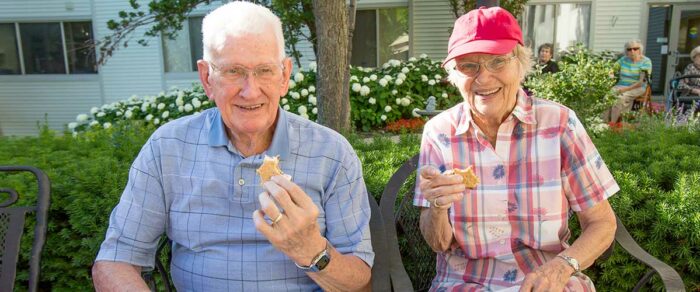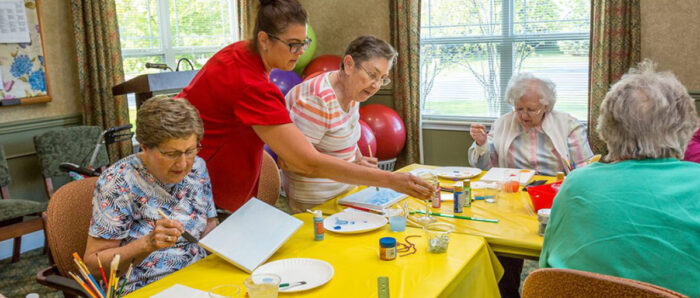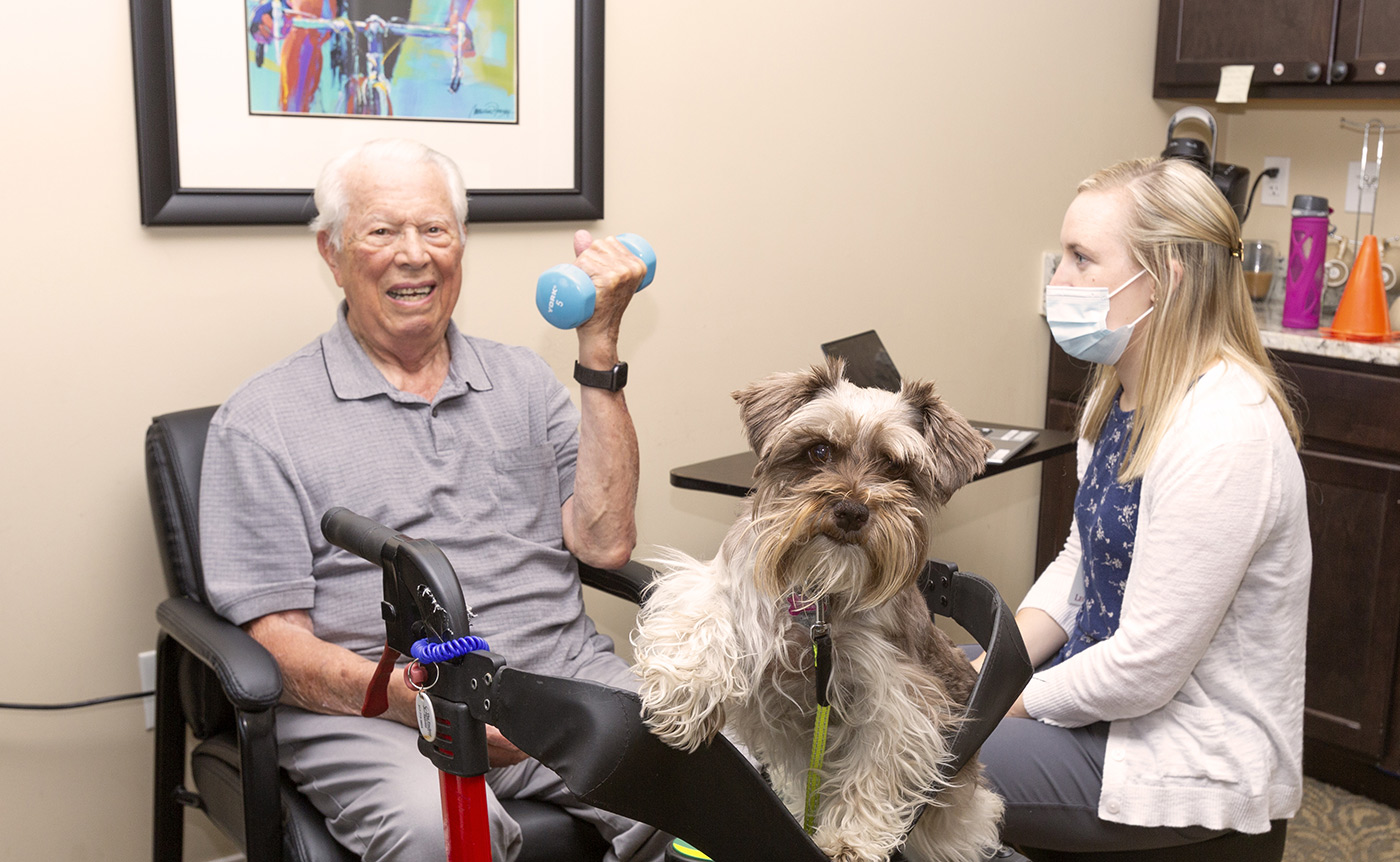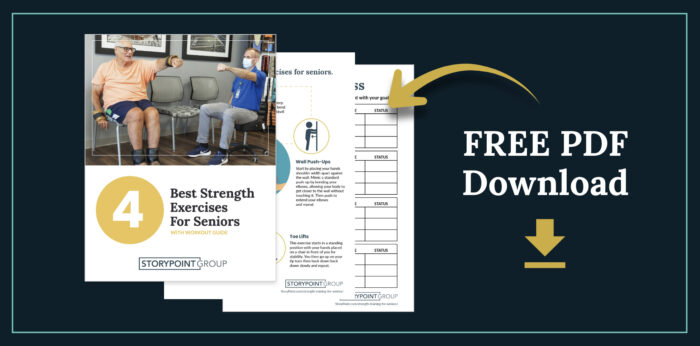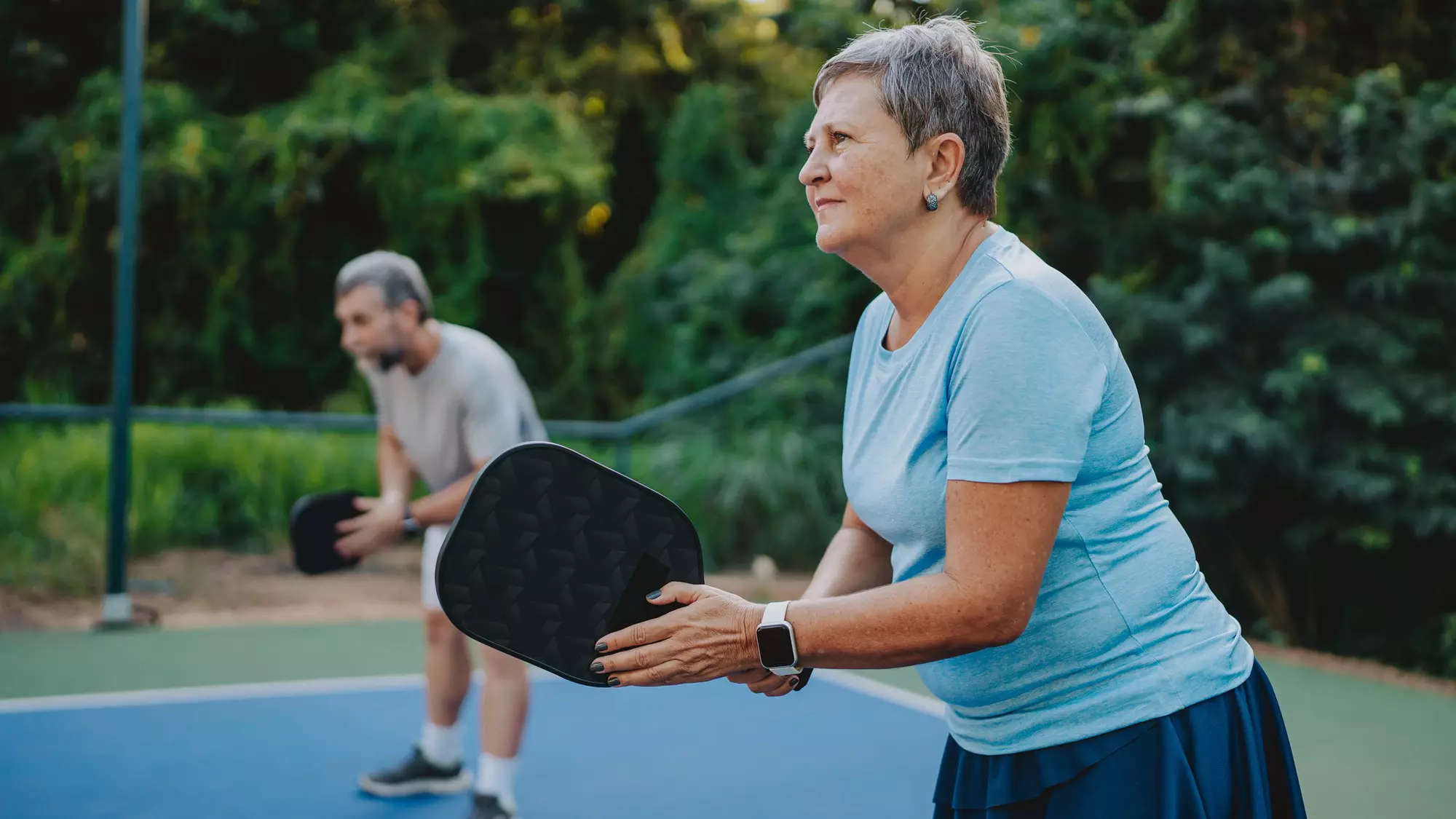Maintaining strength is extremely important as we age. Having strong muscles helps with our ability to maintain mobility and handle everyday tasks. In order to keep bones and muscles strong, seek out exercises that are geared towards strength training for elderly participants.
Working to build strength can boost your mood, endurance, flexibility, mobility and more. There are many benefits to exercising and strength training is one way to get started.
Strength training for seniors will help you ease into your exercise journey at your own pace. Read the following recommendations on why this is important and the best exercises you can try to gain strength at any age.
Why Is Strength Training Important For Seniors?
Incorporating strength training into your routine can improve mobility and prevent injury or falls. While keeping bones strong, strength training also has the power to fight the risk of osteoporosis and other symptoms of disease including arthritis, heart disease and type 2 diabetes.
Outside of physical health, exercising can improve mental health as well. Staying active helps improve sleep which helps reduce depression and cognitive decline. Exercise is known to produce serotonin, which is associated with higher levels of happiness. Strength training for seniors is important to boost mood and also keep your mind sharp
Related: 4 Tips For Improving Senior Circulation Problems
Is There An Age Limit For Strength Training?
There is no age limit for strength training but it must be performed carefully and properly. In the early stages of training, use light weights and a shorter amount of reps. Senior strength workouts should increase intensity and weight as time goes on and the muscles become stronger to take on more effort.
For those just getting started, ease into it in phases. During the first two weeks, don’t use any added weights – participate in the motions but only use your own body weight to strengthen muscles slowly and gently.
For weeks three to six, begin using light dumbbells or ankle weights to build muscle. After seven weeks, continue to add new variations of strength training exercises to continue getting stronger.
To show weight training has no age limit, one of our residents participated in a weightlifting competition at 92 years old!
Watch the video to learn about John’s journey.
How Often Should You Do Strength Training?
Senior strength training provides many positive outcomes from combating weakness to improving balance, mobility, mood and more. However, in order to reap the benefits, senior strength workouts must occur consistently. To ensure consistency, try these steps:
- Set goals. Planning out your goals will motivate you to work harder to reach them. During any process of change, it’s helpful to set your intentions and know what you’re working towards.
- Schedule workout times. Establishing a routine will help keep you on track. Knowing there is a designated time to work out will prevent scheduling conflicts or forgetting to exercise. Planning specific times can help keep you accountable.
- Log progress. Tracking your performance can boost motivation. When you notice improvements, you will want to continue. Logging progress can help ensure you are in alignment with your goals.
When scheduling workout times, aim for two to three days of strength training per week. For beginners, it’s important to ease into this transition and not overwork yourself.
Those who are more experienced can schedule cardio or low-impact exercises for the days that are not scheduled for strength training. This way, you can stay active in other ways than weight lifting such as walking, swimming or yoga.
Related: Low-Impact Exercises For Seniors
What Are The Best Strength Training Exercises For Seniors
For seniors participating in strength training, it’s important to go at your own pace. Begin with the following recommended workouts. Most exercises can be done without equipment as you get started.
It’s recommended to perform 10-15 reps of each exercise three times. When the workout starts becoming easy, it’s time to add in weights. Exercises included in the best strength training for seniors are:
Squats
To perform squats, you start in a standing position with your arms out in front of you for balance and your feet shoulder-width apart. Then, while keeping your back straight, bend your knees into a squatting position, followed by returning to the standing position and repeating.
This exercise strengthens your hips, hamstrings, quads and glutes. Building strength in these areas will improve walking, jogging and stair climbing. If you need assistance, try using a chair for guidance.
Once 10-15 reps start to feel easy, you can increase the number of reps or add weight. You can add weight by holding a dumbbell or medicine ball near your chest while you squat.
Toe Lifts
This exercise starts in a standing position with your hands placed on a chair in front of you for stability. You then stand on your tip toes and repeat. Practicing this move will strengthen your calf muscles and ankles to improve balance and make walking easier.
Wall Push-Ups
Start by placing your hands shoulder width apart against the wall. Mimic a standard push-up by bending your elbows, allowing your body to get closer to the wall without touching it. Then push to extend your elbows and repeat.
This exercise will strengthen your arm and back muscles. Building muscle in your arms can improve upper body mobility and be able to hold or carry everyday items.
As this workout gets easier, you can increase the number of reps or add intensity. Slowly reducing the push-up incline is one way to increase intensity. Try push-ups against a countertop or low surface and then eventually, the floor.
Bicep Curl
Once you have been practicing senior strength training for three to six weeks, it’s time to add weight to your routine. Bicep curls are a simple way to add a small amount of weight into the mix.
Take a dumbbell in each hand and keep your arms down at each side. Then bend one arm at a time to bring the dumbbell toward your chest. When you feel ready, increase the weight of your dumbbells to encourage muscle growth.
Post Workout Cool Down
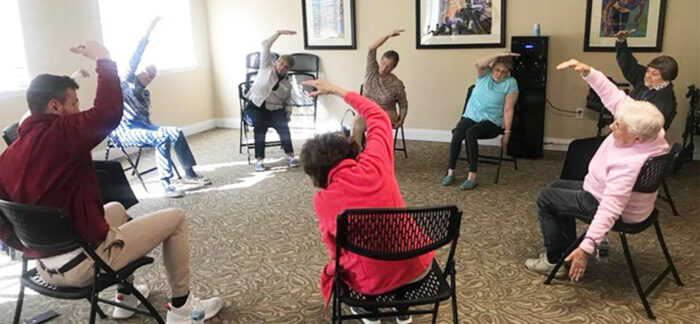
Once the workout is complete, add a cool down session to your routine. Use this time to keep moving. Try slowly marching in place or a low-intensity aerobic machine. During cool down, you must remember to stretch. Since this exercise worked both legs and arms, make sure to stretch the appropriate areas. Common areas to target include:
- Hamstring
- Quadricep
- Bicep
- Tricep
- Calf
Another option for cool down is practicing yoga. This incorporates stretching and mindfulness to continue to engage your mental and physical health during the cool down process.
Related: 10 Benefits Of Yoga For Seniors
Partnering With CorsoCare To Serve Seniors
CorsoCare, a preferred third-party provider of StoryPoint Group, offers seniors more than high-quality care services — seniors also gain a dedicated partner in their health journey.
Whether seniors need expert medical support at home, compassionate end-of-life care, or assistance with daily activities, CorsoCare provides personalized, compassionate care to enhance the quality of life at every stage.
Click here for additional resources and to learn more about CorsoCare.



